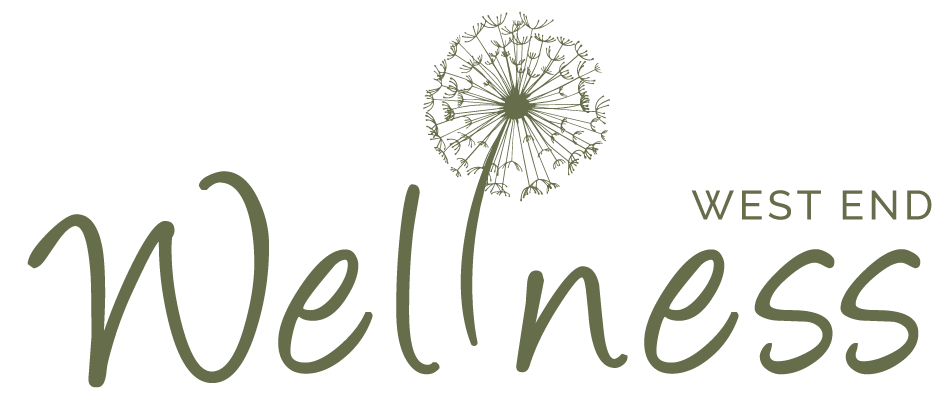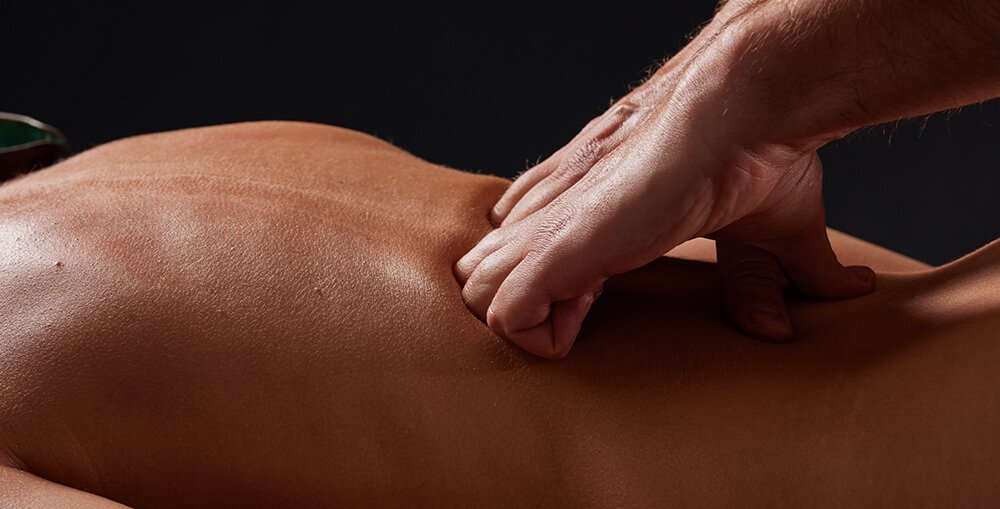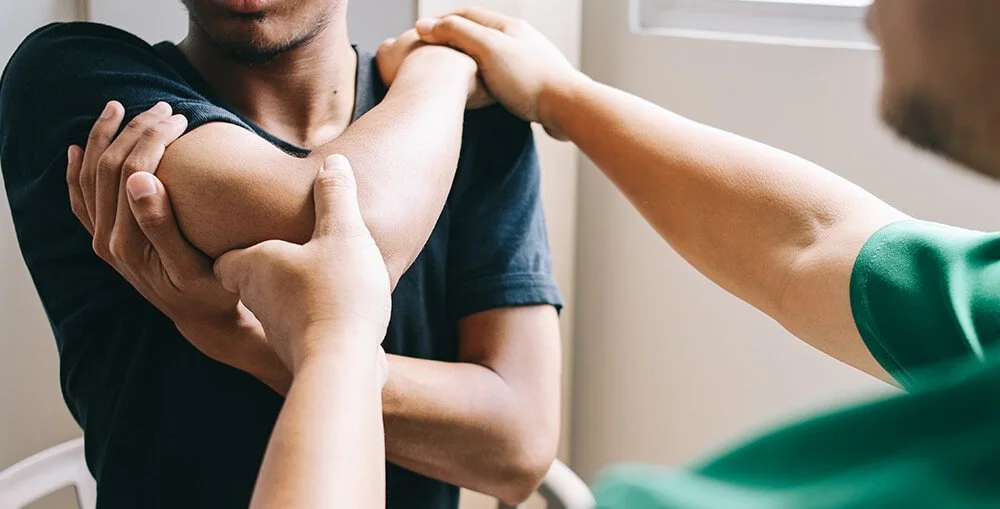The Role of Massage Therapy in Injury Rehabilitation
Table of Contents Show
Quick Summary
This article explores the effective role of massage therapy in injury rehabilitation, outlining the five stages of recovery from initial rest to regaining sport-specific movements. It highlights how specific massage techniques can enhance healing, reduce pain, and improve mobility.
Designed to inform readers about the benefits and safe application of massage therapy, this discussion underscores the importance of professional guidance in ensuring a successful recovery.
If you’ve ever suffered from an injury or chronic pain, you know how crucial effective recovery methods are.
Whether you're an athlete recovering from an injury, struggling with chronic pain, or simply looking to enhance your overall wellness, massage therapy can be a transformative ally.
Massage therapy is more than a means of relaxation; it's a powerful tool for injury rehabilitation and pain management.
Here at West End Wellness, we focus on providing treatments and comprehensive solutions that promote healing, enhance mobility, and prevent future injuries.
We understand that recovery is not a linear process but a journey that requires a holistic approach.
By integrating massage therapy into your recovery plan, you can experience a synergy of benefits that address physical ailments and foster mental and emotional well-being.
In this article, we’ll explore how massage therapy can be integral to injury recovery, helping to ease pain, improve mobility, and accelerate your return to normal activities.
Here’s what we’ll cover:
Why massage therapy is beneficial for injury recovery.
An overview of the different stages of injury rehabilitation.
Practical tips on applying massage therapy to specific injuries.
Important precautions to consider before starting massage therapy.
So, if you are ready, let us help explain the healing world of massage therapy while also helping you understand how it can be your partner on the road to recovery.
Whether you are dealing with sports injuries, accidents, or stress-induced conditions, understanding the potential of massage therapy can lead to more effective, faster recovery and a healthier, more vibrant life.
Would you know what the difference is between a deep tissue massage and a soft tissue massage? Why not check to see your right in this great read.
Why Is Massage Therapy For Injury Recovery Important?
Recovering from an injury can be daunting, often frustrating and frustrating. That's where massage therapy comes in—not only as a tool for relaxation but as a crucial component in rehabilitation. Understanding its importance can empower those affected to make informed decisions about their recovery options.
Effective Pain Management: Pain relief is one of the most immediate benefits of massage therapy. By manipulating soft tissues, massage helps alleviate pain through several mechanisms, including improving blood circulation and reducing inflammation. This can be particularly beneficial for those recovering from musculoskeletal injuries.
Accelerated Healing: Massage therapy promotes increased circulation, vital for healing. Enhanced blood flow delivers more oxygen and nutrients to injured areas, speeding up the healing process and reducing recovery time. This is essential for anyone looking to return to daily activities or sports more quickly.
Support and Guidance: Recovering from an injury can be a complex process that benefits greatly from professional guidance. Registered massage therapists not only provide treatments but also offer valuable advice on additional recovery strategies, further contributing to effective and safe rehabilitation.
How Does Massage Help Injury Recovery?
Massage therapy aids injury recovery by improving tissue elasticity and flexibility, which helps prevent the formation of scar tissue in the injured area.
It also stimulates the flow of lymph fluid, which helps reduce swelling and facilitates the removal of waste products from the body. Additionally, by relaxing tight muscles, massage can prevent the pain-spasm-pain cycle, which is common in many injuries.
What Is the Main Purpose of an Injury Management Massage?
The primary goal of an injury management massage is to restore function to the injured area as effectively and safely as possible.
This type of massage focuses on reducing pain, decreasing inflammation, and promoting the repair of soft tissues. It also aims to improve flexibility and strength in the affected area, helping to restore mobility and prevent future injuries.
What are the 5 Stages of Injury Rehabilitation?
Injury recovery is a journey that varies for everyone, yet it generally follows five key stages, each designed to address different needs as your body heals and regains strength. This structured approach helps ensure a comprehensive and safe recovery, reducing the likelihood of setbacks.
Understanding these stages can reassure us that there is a path forward after injury. Each phase builds upon the last, helping you gradually return to your daily activities and sports with confidence and strength.
Stage #1: Rest and Protect
The first thing your body needs after an injury is time to heal. During this initial phase, it's crucial to rest and protect the injured area. This might mean limiting movement or weight-bearing activities to prevent further injury. Techniques like RICE (Rest, Ice, Compression, Elevation) are often used to control swelling and manage pain. It's a time for the body to start its natural healing process, and your role is to support it, not rush it.
Stage #2: Mobility and Movement
Once the pain and swelling have begun to subside, the next step is to gently reintroduce movement. This stage focuses on regaining mobility and flexibility without straining the healing tissues. Gentle stretches and controlled movements help to restore range of motion and decrease stiffness. It’s important to listen to your body and avoid pushing through pain, as doing so could hinder your recovery.
Stage #3: Strength and Stamina
Building strength and stamina is crucial for a full recovery. This stage involves incorporating light resistance exercises and cardiovascular workouts that don't overload the still-recovering tissues. The goal here is to strengthen the muscles around the injury to support and stabilize the affected area, gradually rebuilding the strength you had before the injury.
Stage #4: Reconnecting to Coordination
As strength returns, it’s essential to focus on coordination and balance. This stage involves exercises that improve proprioception—your body's ability to perceive its own position in space. Recovering coordination helps prevent future injuries and is especially important for returning to sports or activities that require precise movements.
Stage #5: Rebuilding Sport-Specific Technical Movements
The final stage of rehabilitation is about refining and enhancing sport-specific skills. Here, the exercises and drills become more intensive and are tailored to the demands of the specific activities you are looking to return to. This stage ensures that you not only get back to your previous level of activity but do so with a better foundation to prevent future injuries.
Precautions and Considerations
When integrating massage therapy into your injury rehabilitation plan, it's essential to proceed with caution to ensure safety and maximize the benefits of your treatment. Here are some key precautions and considerations to keep in mind:
Consult with a Professional
It's crucial to consult with healthcare professionals before starting any new treatment, especially when recovering from an injury. This includes your doctor and a qualified massage therapist specializing in injury rehabilitation. They can provide a tailored approach based on the specific details of your injury and overall health.
Understand the Timing
Massage therapy isn't suitable for all stages of injury recovery. For example, direct massage on a recently injured area can exacerbate swelling and pain and impede healing. Understanding when to incorporate massage into your rehabilitation plan is critical and should be guided by a professional.
Recognize the Type of Massage
Not all massage techniques are appropriate for injury recovery. Techniques like deep tissue massage may not be suitable early in recovery but could be beneficial later. Your therapist will select the most appropriate methods to aid your healing at each stage.
Monitor Your Response
Every person reacts differently to massage therapy. Pay close attention to how your body responds to treatment. If you experience increased pain or discomfort during or after a session, immediately communicate this to your therapist. Adjustments may be necessary to ensure that the therapy remains beneficial and safe.
Be Aware of Contraindications
Certain conditions may make massage therapy inappropriate or require modifications. These include but are not limited to severe osteoporosis, high blood pressure, and certain skin conditions. Always inform your therapist about any existing health issues or concerns.
Pace Yourself
Recovery from injury is a gradual process. It’s important to pace yourself and set realistic expectations. Massage therapy can significantly aid in recovery, but it is just one part of a broader rehabilitation strategy that might also include physical therapy, medication, and other treatments.
We hope you follow these precautions and considerations, but depending on your needs, you may also want to consider integrating other supportive practices like hydrotherapy, acupuncture, or physical therapy. A holistic approach can enhance your recovery by addressing various aspects of health and well-being.
Ultimately, taking these precautions can help ensure that massage therapy is a safe and effective component of your recovery journey, helping you return to your daily activities and enjoy a higher quality of life.
Is massage good for torn ligaments?
Massage can indeed be beneficial for torn ligaments, assisting in the recovery process in several key ways:
Increased Blood Circulation: Massage helps stimulate blood flow to the affected area. Enhanced circulation brings essential nutrients and oxygen crucial for healing torn ligaments. By improving blood flow, massage reduces recovery time and promotes tissue repair.
Reduction of Swelling: Effective massage techniques can help reduce swelling around torn ligaments. Managing swelling is important for comfort and improving the range of motion and functionality as the ligament heals.
Pain Management: Massage can also provide relief from pain associated with torn ligaments. It does this by relaxing tense muscles and releasing endorphins, which are natural pain relievers produced by the body.
Enhanced Flexibility: As the ligament heals, massage can help maintain and improve flexibility in the surrounding tissues, preventing stiffness and ensuring that the healing process allows for a return to full mobility.
However, it's important to note that massage therapy should be applied carefully and preferably by a professional who understands the complexities of treating ligament injuries.
Timing is also crucial—massage too soon after the injury can potentially worsen it. Always consult with a healthcare provider or a specialized therapist to determine the appropriate treatment and timing for massage therapy after a ligament tear.
What are 4 instances when massage is not recommended?
Massage therapy can be highly beneficial for many individuals, but there are certain conditions where it may not be advised or should be approached with caution:
Contagious Diseases: If you have a contagious illness such as the flu or a cold, it's best to avoid massage. Not only could you potentially spread the disease to the massage therapist and others, but some therapies could exacerbate your symptoms.
Recent Surgery or Acute Injuries: Following surgery or an acute injury, your body needs time to heal. Massage directly on or around the affected areas can disrupt the healing process and might even cause further damage. Always consult with your healthcare provider to determine the right time to start massage therapy post-operation or injury.
Severe, Unstable Hypertension: Individuals with severe or uncontrolled high blood pressure should avoid massages that involve intense pressure, such as deep tissue massage, as it can further elevate blood pressure levels. It’s crucial to have stable, managed hypertension before undertaking any form of massage therapy.
Local Contagious or Irritable Skin Conditions: Massage is not recommended over areas of skin that are infected, inflamed, or have conditions like eczema or psoriasis. Massaging these areas can irritate the skin further and spread the infection to other body parts.
These precautions ensure that massage therapy is safe and beneficial for you and the therapist. Always consult with a professional to understand when massage may or may not be suitable for your specific health situation.
What massage techniques are used for injuries?
When it comes to treating injuries with massage therapy, a knowledgeable therapist employs a variety of techniques tailored to the specific needs and stage of recovery of the injury. While lighter Swedish massage strokes are often used for their calming effects and to promote blood circulation, other techniques also play crucial roles:
| Massage Therapy Service | Description |
|---|---|
| Deep Tissue Massage | This technique targets the deeper layers of muscle and connective tissue, helping to break up and eliminate scar tissue. Deep tissue massage helps restore normal movement and relieve pain during the later stages of healing. |
| Myofascial Release | Often used for treating muscle immobility and pain, this technique involves applying gentle, sustained pressure into the connective tissue restrictions to eliminate pain and restore motion. |
| Trigger Point Therapy | This method focuses on relieving areas of tight muscle fibers that can form in muscles following injuries or overuse. It is highly effective for managing chronic pain and recovering from soft tissue injuries. |
| Lymphatic Drainage | Especially beneficial in the early stages of injury recovery, lymphatic drainage helps reduce swelling and remove waste products, which is crucial after injuries like sprains or surgery. |
| Sports Massage | Tailored specifically to the needs of athletes, sports massage can be used both for preventative care and to help heal injuries from sports. It involves a combination of techniques, including stretching and strengthening exercises, which can accelerate the healing process. |
Each of these techniques offers unique benefits and can be combined effectively to create a comprehensive treatment plan that supports faster and safer recovery from injuries.
Conclusion
Throughout this article, we've explored the significant role that massage therapy can play in injury recovery and rehabilitation. Incorporating massage therapy into your recovery plan has substantial benefits, from reducing pain and inflammation to enhancing blood circulation and improving flexibility.
We've discussed the key stages of injury rehabilitation, emphasizing how each phase is crucial for a comprehensive recovery. Starting with rest and protection, moving through mobility and strength building, and culminating in the refinement of sport-specific technical movements, each stage is designed to bring you back to your peak condition gradually.
It's essential to remember that while massage therapy offers many benefits, it's crucial to approach this therapy with care.
Understanding when massage therapy is appropriate and which techniques are most beneficial for your particular injury is critical. This is why seeking advice from professionals, such as the registered massage therapists at West End Wellness, is invaluable.
At West End Wellness, our dedicated professionals are equipped to guide you through your recovery.
Whether you're dealing with a recent injury or an ongoing pain issue, our therapists tailor their approach to meet your needs, ensuring you receive the most effective treatment.
Injury recovery is a journey, and it's one you shouldn't have to undertake alone.
Consider contacting a professional who can provide the expertise and support necessary to navigate this path safely and effectively. Let West End Wellness be your partner in returning to health and achieving lasting wellness.
If you're ready to take the next step in your recovery, we invite you to contact us at West End Wellness, where your healing is our priority.
Together, we can work towards a faster, safer, and more effective recovery.
If you have any further doubts or questions regarding this subject or another treatment, contact one of our experienced Acupuncturists or Registered Massage Therapists here at West End Wellness Clinic. You can either give us a call or make an appointment.
Disclaimer: Please remember this article is for informational purposes only and should not replace professional medical advice. Please consult a healthcare provider or someone with the correct qualifications before starting any new exercise or treatment program.





